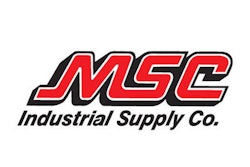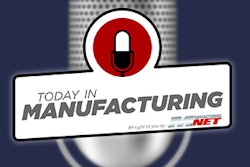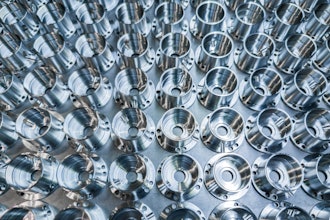
Manufacturing rebounded in 2013 and forecasters are predicting that 2014 could be another good one for the sector. In fact, manufacturing has grown for seven consecutive months, according to government reports.
To further bolster the economic optimism, a new report from the Institute for Supply Management said that manufacturing in the U.S. eased in December but still expanded at the second-fastest pace in more than two years, a sign the industry will grow in early 2014. The ISM report said that production slowed to 57, from the prior month’s 57.3, which was the highest since April 2011. Readings above 50 indicate expansion. Orders were the strongest since April 2010 and a measure of factory employment climbed to a more than two-year high.
On top of those numbers, the government previously said that 27,000 manufacturing jobs were created in November.
Dan Meckstroth, vice president and chief economist for the Manufacturers Alliance for Productivity and Innovation (MAPI), pointed out in the group’s recent quarterly report that manufacturing industrial production increased at a 1.0 percent annual rate in the third quarter of 2013 but grew at a 3.8 percent annual rate in the month of October.
“The acceleration in manufacturing activity is coming off of essentially no growth in the second quarter but a 4.9 percent annual rate of growth in the first quarter of 2013. The year began with manufacturing production surging, but the pace was not supported by the performance of the overall economy. The industrial sector therefore went through an adjustment period to realign orders and production with a slow-growing domestic economy and the deteriorating export prospects in the second quarter,” Meckstroth wrote in his report, which can be viewed at www.mapi.net.
The economy accelerated in the third quarter and the major export market overseas improved, so manufacturing production put together three months of continuous growth in August, September, and October, Meckstroth said. The ISM’s Purchasing Managers Index readings for October and November were very positive, pointing to further acceleration of industrial activity.
“The manufacturing outlook for 2014 and 2015 calls for a percentage point acceleration in the growth rate each year. Consumer-driven manufacturing growth, however, will be relatively stable and supported by surprisingly robust employment growth. Households have low debt burdens and their wealth is rising because of higher stock prices and home prices. Importantly, no major tax increases are foreseen for the near term,” he wrote.
As good as this news is, some well-known top economists such as Alan Beaulieu of ITR Economics are not as optimistic for long-term economic growth.
“The 27,000 is the seasonally adjusted number, or if you prefer, the number that is adjusted by man as opposed to the actual change in employment.” Beaulieu wrote in his blog at www.itreconomics.com.
“Actual manufacturing employment went down by 3,000 people, not up by 27,000. The real change, down 3,000, was normal for November. The annual year-over-year growth rate slipped lower to 0.5% with the quarterly year-over-year (3/12) rising to 0.4%. A normal decline in manufacturing jobs in December will keep the annual growth rate at 0.5%,” Beaulieu wrote.
However, he also said that a 0.5% annual growth rate is better than the 10-year average of -2.1%. Manufacturing, he said, is making a comeback, and the prospects for more re-shoring are good.
“But let’s base our economic outlook on fact; there was no surge in manufacturing employment in November. The economy is expanding, but there are no new signs of a long-term economic growth. We are still on track with our forecast for a soft spot in the second half of 2014,” he wrote.
Meanwhile MAPI notes that 2014 will see strong improvement in business spending and housing.
Every quarter, MAPI provides a detailed look at the health of the domestic manufacturing sector and reviews the performance of a selected group of its most important subsectors. The report covers the actual data available through October 2013 and provides its forecasts, which were completed in late November 2013. In its quarterly review, MAPI extended the typical two-year forecast to five years and provide the average annual growth rate for 2016 through 2018.
Here are some of highlights from MAPI’s report for specific sectors:
- Housing starts will post large percentage gains in 2014 and in 2015. Rising mortgage rates will not derail the recovery. Housing prices are rising and new and existing home inventories are tight. The housing rebound particularly helps wood products, nonmetallic mineral products, HVAC, household appliances, furniture, and construction machinery.
- There is pent-up demand for big-ticket purchases of homes and motor vehicles. While both industries will grow through 2015, there is more upside potential in housing and its supply chain. The recovery in light vehicle sales is at a more advanced stage.
- A recovery in Europe and Japan and a faster pace of domestic growth should restore business confidence in business investment. The pace of business equipment production is predicted to accelerate and be a major source of manufacturing growth.
Metalworking Machinery Production
- Metalworking machinery, according to MAPI, consists of industrial molds; metal cutting and forming machine tools; special tools, dies, jigs, and fixtures; and miscellaneous metalworking machinery (cutting tools and rolling mill machinery).
- Metalworking machinery production rose 1 percent in 2013. MAPI forecasts that production will increase 3 percent in 2014 and 6 percent in 2015. The average rate of growth is predicted to be 4 percent a year from 2016 to 2018.
- Production declined 2 percent in the three months ending October 2013 over year-ago levels, and the quarter-to-quarter momentum declined.
- The U.S. Census Bureau reported that metalworking machinery orders (in dollars) were up 17 percent in the period of July to September 2013 on a year-over-year basis.
- Metalworking machinery imports fell 5 percent and exports were also down 5 percent; the trade deficit was less negative in the third quarter of 2013 compared with one year ago.
Also, Meckstroth wrote:
- Engine, turbine, and power transmission equipment production increased 1 percent in 2013. Production is expected to grow 5 percent in 2014 and 7 percent in 2015. The average rate of growth is predicted to be 5 percent a year from 2016 to 2018.
- Production grew 13 percent in the three months ending October 2013 compared with the same period one year ago, and the quarter-to-quarter momentum is even more positive.
- Material handling equipment consists of elevators, escalators, conveyors, overhead traveling cranes, hoists, industrial trucks, tractors, and trailers.
- Inflation-adjusted material handling equipment orders increased about 3 percent in 2013.






















